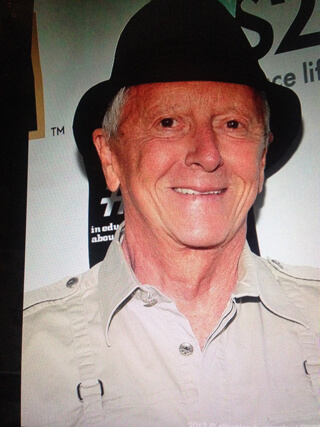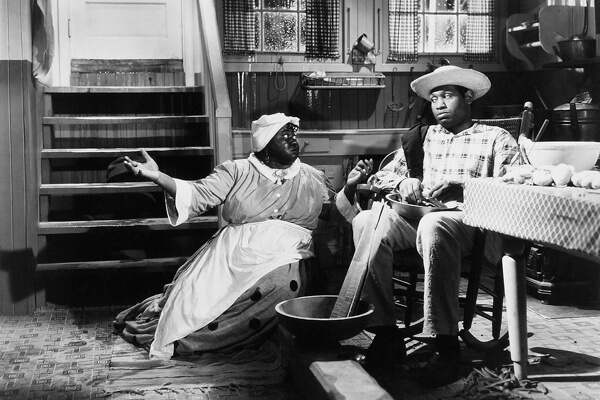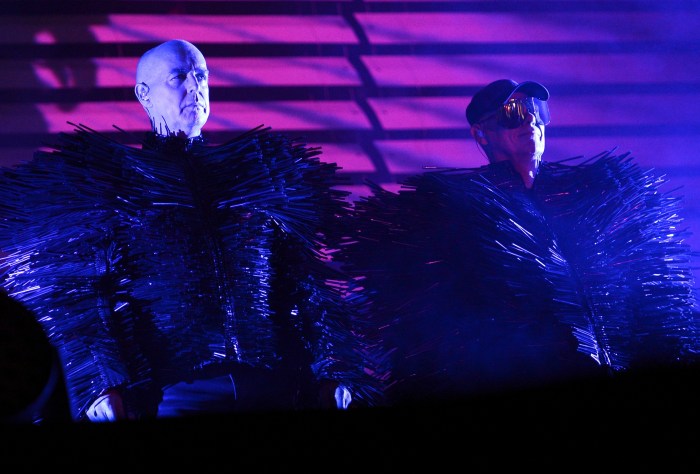Katharine Hepburn in Dorothy Arzner’s “Christopher Strong.” | FILM FORUM VIA PHOTOFEST
Forget westerns, film noirs and horror, the movie genre of genres as far as I’m concerned is Pre-Code, those films made before the puritanically restrictive Hays Code took control of censorship in 1934.
Film Forum is hosting a four-week celebration of films made in 1933, just before that dreary takeover, by which time, not only the genre, but Hollywood film itself had reached an apotheosis. Every technical limitation imposed on the medium by the introduction of sound in 1927 had been efficaciously dealt with by then, and American films positively glowed with eye-popping splendor and flowing movement, editorial crispness, and aural richness.
In this current movie year of so many bloated epics with average runs of two-and-a-half grueling hours, how refreshing these films are with their running times of under 90 minutes, and often far less, and their suave ability to grab your interest with such thrilling immediacy. Pre-Code films had very little self-indulgent auteurial fat, one of their greatest strengths.
And, adding even more visual magnificence was the fact that Art Deco design was then at its summit, something that studio art directors took full advantage of, with dazzling geometrics and the blinding high-key use of white. Also, the women — from Garbo to Harlow — with their softer hair and makeup and sinuous, bias-cut gowns often worn sans underwear were never more sensually appealing or as strong and independent, before or since.
Herewith is a checklist of the festival’s essentials:
The two fairly recently rediscovered essentials of Pre-Code, “Female” (Mar. 7) and “Baby Face” (Feb. 15) are screened, the first starring the magnificent, cello-voiced Ruth Chatterton as a female auto industry magnate who runs her company the way Catherine the Great ran Russia, with a definite eye for the nubile, male eye candy on her staff. The second has Barbara Stanwyck at her most likably ruthless, clawing her way up the ladder of big business, man by man, via the use of her satin-swathed killer body and hypnotically direct appraisal of male frailty. It also features entrancing black actress Theresa Harris as Stanwyck’s highly independent sidekick/ maid who was given startlingly color-blind consideration by her. (Harris inspired Lynn Nottage’s wonderful recent play “By the Way, Meet Vera Stark.”)
Yes, black actors usually played servants in these films, but they were given wonderfully sassy lines and business, as well as their requisite uniforms. Mae West’s two best films, “She Done Him Wrong” and “I’m No Angel,” had this then 40-year-old, divinely liberated Goddess of Sex surrounded by such as Louise Beavers and Hattie McDaniel, who deal with their mistress’ whims and excesses with wry humor and soulful admiration. Indeed, one of the most joyous moments in all cinema is the song, “I’ve Found a New Way to Go to Town,” in “I’m No Angel,” which West performs with a whole platoon of maids funking out behind her.
“Bombshell” (Feb. 14): Jean Harlow’s best vehicle, this devastatingly witty send-up of the movie biz was based on the raucous life of Harlow’s sex bomb predecessor, Clara Bow. Harlow plays a movie star beset with mooching family, gigolo suitors, stalker fans, and a pesky press agent played by Lee Tracy, a seminal Pre-Code figure with his nasal rat-a-tat delivery and always manically self-serving agenda. Beavers is her maid with the best comeback to an impossible boss ever: “Don’t scald me with your steam, woman. I know where the body’s buried!”
“Christopher Strong” (Feb. 15): Katharine Hepburn’s second film posits her as a glum, Garbo-esque aviatrix, torn between career and a married man (marvelously neurotic Colin Clive). Directed and written by lesbians Dorothy Arzner and Zoe Akins, respectively, it’s a hauntingly gloomy, often strangely beautiful feminist tract, never more so than when Kate appears in Walter Plunkett’s spectacular gleaming moth costume, in the greatest visual fillip of her career.
1933 was Hepburn’s greatest year; she also appeared in “Morning Glory” (Feb. 23), for which she won the Oscar, as a desperately ambitious actress (based on Ruth Gordon), and “Little Women” (Feb. 23), one of the year’s biggest hits, a true classic, magically directed by George Cukor, in which she definitively played that beloved butch Jo March. The former film is key, for it was here that the familiar Hepburn mannerisms — the deliriously intense line delivery, fluttery pretensions, and stark, singular body language – were established.
Willaim Gargan, Miriam Hopkins, and Jack LaRue in Stephen Roberts’ “The Story of Temple Drake.” | FILM FORUM VIA PHOTOFEST
“The Story of Temple Drake” (Mar. 1): This adaptation of William Faulkner’s “Sanctuary” helped to bring on the Code with its rape and perversions and is a compelling, artfully designed study of irrepressible sexual impulse, embodied in the brilliant performance by Miriam Hopkins, the greatest actress of the early sound era.
Although Hepburn won the 1933 Oscar as Best Actress, Hopkins, who wasn’t even nominated, was the pre-eminent woman of the year. In Ernst Lubitsch’s “Design for Living”, she helped make this Noel Coward adaptation, which profligately used only one original line from the play, into the scintillating sex comedy it was, with her as self-proclaimed “Mother of the Arts” to simultaneous lovers Gary Cooper (a painter) and Fredric March (a writer), also shockingly besotted by one another.
It’s a pity that Film Forum isn’t reviving her other 1933 masterpiece, “The Stranger’s Return,” the one forgotten American film most in need of reconsideration. It’s a bucolic King Vidor piece with her as a sophisticated urbanite coming home to her family farm roots, the culture clash of which is delineated with the rarest intelligence and warmly human observation.
Garbo, the biggest star of the era, whose presence illuminated more bad pictures than good, had one of her best outings in “Queen Christina” (Feb. 13) as the Swedish monarch fond of cross-dressing and her ladies-in-waiting, both of which director Rouben Mamoulian touched on with his customary audacity and visual élan. Her silent “memorizing” of the room in which she has the schtup of her life with Spanish nobleman (and real life ex-lover) John Gilbert, is a coup de cinema only this rara avis could have pulled off, and she does so with a sensuality that is quite miraculous.
“Blood Money” (Feb. 26): Rowland Brown’s screwball underworld epic features George Bancroft as a bail bondsman torn between Judith Anderson as his statuesquely empathetic cabaret-owning mistress (her best screen performance, apart from “Rebecca”) and Frances Dee as a delectable nymphomaniac with a taste for SM. Dee herself told me she loved playing this unconventional role, such a departure from the bland sweethearts she was often given.
“Picture Snatcher” (Mar. 2): This is my favorite James Cagney film, in which he plays an unscrupulous tabloid photographer bent on getting a shot of a woman in the electric chair, among other unsavories. Breathlessly fast and funny, Cagney has a ball batting around forgotten flapper Alice White, a dizzy delight as his dippy inamorata (“I love being called pet names!”).
Cagney shows off his fabulous virtuosity as well in “Footlight Parade” (Feb. 16) demonstrating his unusual, sprightly, and stiff-legged dancing talent, in this ingratiating musical with the tough, intensely likable Joan Blondell (who tells off a romantic rival, “Outside Countess! As long as they have sidewalks, you’ve got a job!,” before literally kicking her in the ass).
“Flying Down to Rio” (Mar. 6): This first pairing of Fred Astaire with Ginger Rogers is one of the most entertaining musicals, what with their snappy dancing, terrific Vincent Youmans-Gus Kahn songs, some ultra-funky choreography for the black dancers in the “Carioca” number, the matchless beauty of Dolores Del Rio paired with the contrastingly platinum blonde Gene Raymond, and that crazy airborne finale.
Clark Gable and Joan Crawford in Robert Z. Leonard’s “Dancing Lady. | FILM FORUM VIA PHOTOFEST
“Dancing Lady” (Mar. 6): This lavish Joan Crawford MGM musical gives her the chance to show off her terrific legs (in some rather wobbly dance routines with Astaire), her then trademark obsession with gardenias, her ubiquitous emotional anguish (torn between roughhouse director Clark Gable and epicene millionaire Franchot Tone), and, most of all, that incredibly gorgeous face — before it became a frozen, comical Joker-mask — with its architectural bone structure and huge, luscious features.
“Cavalcade” (Feb. 24): The Oscar-winning best film of the year was this costly transferral of Noel Coward’s play, a shameless celebration of England’s traditional values and class system, starring the impossibly aristocratic — sometimes unintentionally hilarious, they’re so arch — and stoic Clive Brook and exquisite Diana Wynyard. Downstairs, the lower orders were represented by the treasurably raucous Una O’Connor and drunken Herbert Mundin. Notable for its haunting Titanic sequence, “20th Century Blues,” sung by Ursula Jeans in a stunning Deco montage, and its splendid costumes, designed by my late friend Earl Luick, who said their rare mention in the contemporary reviews of the film only pissed off its producer, Winfield Sheehan. “Downton” fans will dote on this one.
The sublimely pretty Loretta Young was never the greatest actress, but is well represented by two of her best, playing adorable pre-Audrey Hepburn waifs in dire need of protection. “Zoo in Budapest” (Feb. 21) is a dream-like idyll set in the famous Hungarian menagerie, photographed by the great Lee Garmes and, yes, the animals are set free.
The emotionally fecund “Man’s Castle” (Feb. 20) directed by romance specialist Frank Borzage, addresses the Depression head-on, set in a shanty town on the East River, with her real-life lover Spencer Tracy as her grubby savior. Wonderful Marjorie Rambeau, a powerhouse of a character actress, is especially vivid and raffish.
“King Kong” (Mar. 3) needs no explanation, but a much rarer and far more horrifying entry is “Island of Lost Souls” (Feb. 28), a wild adaptation of H.G. Wells’ “Dr. Moreau” novel, with homosexual Charles Laughton having a demonic field day with his creepy legions of half-ape men who will really give you nightmares.
Rarities in the series I haven’t seen but am breathlessly anticipating include “Cradle Song” (Feb. 21), set in a convent, directed by the gay and always visually masterful Mitchell Leisen and starring Dorothea Wieck, from the lesbian classic “Maedchen in Uniform,” whom Paramount tried unsuccessfully to turn into a Garbo-esque star.
I can’t believe that Warner’s could allow “Convention City,” known as perhaps the dirtiest of all Pre-Codes — which star Joan Blondell said was once screened at stag parties — to be a lost film. At any event, there will be a dramatic reading of the original script (Feb. 18), at which you may close your eyes and imagine how the likes of Blondell, icy Mary Astor, oily Adolphe Menjou, and perennial juvenile Dick Powell once cavorted without the questionable benefit of bluestocking edits or revisions.
33 | Film Forum | 209 W. Houston St. | Through Mar. 7 | filmforum.org





































